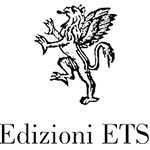Digital Writing and Storytelling in Teacher Education
evolution and impacts
DOI:
https://doi.org/10.4454/graphos.136Keywords:
Teacher Training, Digital Storytelling, Documentation, Narration, Artificial IntelligenceAbstract
The article examines the evolution of narrative and writing practices, which are progressively shifting towards digital formats, with educational implications and significant impacts on teacher training. It explores the advantages and challenges associated with integrating digital writing into educational practice, such as enhancing multimodal expressive forms and creating inclusive learning environments. Furthermore, the article analyzes some future implications of Artificial Intelligence in teachers' professional writing, raising questions about how to balance human and algorithmic creativity. Particular attention is given to the value of documentation as a key element in teacher education and professional development, considering writing as a learned skill. Building on these premises, the article also explores the role of a specific professional writing practice - digital storytelling - in initial teacher education, focusing on a study conducted on the perceptions of future specialized teachers. The analysis of responses highlights a growing awareness of the importance of digital storytelling as a means to enhance learning, foster inclusion, and develop communication skills. Although theoretical knowledge of digital storytelling is widely disseminated, its actual use in the classroom remains limited.
References
Albanese, M., & Compagno, G. (2024). Scrittura e memoria: nessi neurodidattici per l’apprendimento: Un espediente narrativo nella formazione dei futuri insegnanti di so-stegno. Graphos. Rivista Internazionale Di Pedagogia E Didattica Della Scrittura, 5. https://doi.org/10.4454/graphos.94
Balleri, L. (2025). Autobiografia tra scrittura manuale, digitale e Intelligenza Artificiale: Un viaggio nella costruzione del sé. Graphos. Rivista Internazionale di Pedagogia e Didatti-ca della Scrittura, 6. https://doi.org/10.4454/graphos.105
Bauman, Z. (2009). Vite di corse. Come salvarsi dalla tirannia dell’effimero. Bologna: Il Mulino.
Beltramini, C. (n.d.). Digital storytelling. Metodologie Didattiche. https://www.metodologiedidattiche.it/digital-storytelling/
Bergamini, O. (2013). La democrazia della stampa. Storia del giornalismo. Roma-Bari: Laterza.
Bonaiuti, G., Calvani, A., Menichetti, L. & Vivanet, G. (2017). Le tecnologie educative. Roma: Carocci
Cambi, F. & Pinto Minerva, F. (2023). Governare l'età della tecnica. Il ruolo chiave della formazione. Mimesis.
Bruner, J. (2006). La fabbrica delle storie. Diritto, Letteratura, Vita. Roma-Bari: Laterza.
Buckingham, D. (2020). Un manifesto per la media education. Milano: Mondadori.
Cambi, F. (2009). Narrazione e intercultura: un incontro cruciale. La Ricerca 12 (172), 261-264.
Carr, N. (2010). The shallows: What the Internet is doing to our brains. W. W. Norton & Company.
Demetrio, D. (2008). La scrittura clinica. Consulenza autobiografica e fragilità esistenziale. Milano: Raffaello Cortina.
Dibattista L., Morgese F. (2012). Il racconto della scienza: digital storytelling in classe. Roma: Armando.
Eco, U. (1975). Trattato di semiotica generale. Milano: Bompiani
Ferrari, A., & Troia, S. (2015). DIGCOMP Le competenze digitali per la cittadinanza. http://www.cittadinanzadigitale.eu/wpcontent/uploads/2015/11/digcomp_Ferrari_Troia.pdf.
Frabboni, F., & Pinto Minerva, F. (2013). Manuale di pedagogia e didattica. Bari-Roma: Laterza.
Huang, H.-W., Li, Z., & Taylor, L. (2020). The effectiveness of using Grammarly to im-prove students' writing skills. In Proceedings of the 5th International Conference on Dis-tance Education and Learning (ICDEL '20) (pp. 122–127). ACM. https://doi.org/10.1145/3402569.3402594
Kaddouri, M. (2006). Quelques considerations transversales a propos de l'écriture sur sa pratique professionnelle. In F. Cros, Écrire sur sapour développer des compétences pro-fessionnelles. Paris: l'Harmattan.
Laneve C. (1997). A cura di. Theuth e il papiro. Percorsi di didattica della scrittura. Milano: Led
Laneve, C. (2009). Scrittura e pratica educativa. Un contributo al sapere dell’insegnamento. Trento: Erickson.
Laneve, C. (2024). L’artigianalità della (mia) pagina: Sono un mozartiano incallito. Graphos. Rivista Internazionale Di Pedagogia E Didattica Della Scrittura, 4, 9–20 https://doi.org/10.4454/graphos.75+
Lovecchio, N. (2025). L’intelligenza artificiale bloccherà lo sviluppo della motricità fine?. Graphos. Rivista Internazionale Di Pedagogia E Didattica Della Scrittura, 6. https://doi.org/10.4454/graphos.101
Manetti, G. (2014). La nascita e l’evoluzione della scrittura. In U. Eco (a cura di), Storia della civiltà europea (Ed. in 75 ebook). Antichistica 13.
Mirfakhraie, R. (2023, April 24). ChatGPT and human intelligence: Noam Chomsky re-sponds to critics. Monthly Review Online. https://monthlyreview.org/2023/04/24/chatgpt-and-human-intelligence-noam-chomsky-responds-to-critics/
Mortari, L. (2007). Cultura Della ricerca e pedagogia. Roma: Carocci.
Pastré P., Mayen P. & Vergnaud G. (2006). Note de synthèse: la didactique professionnelle. Revue française de pédagogie, 154, pp.145-198.
Perla, L. (2012). Scritture professionali. Metodi per la formazione. Bari: Progedit.
Perla, L. (2017). DocumentAZIONE = ProfessionalizzAZIONE? Scritture per la co-formazione in servizio degli insegnanti (pp. 69-87). In P. Magnoler, A.M. Notti, L. Perla (Eds.). La professionalità degli insegnanti. La ricerca e le pratiche. Lecce: Pensa Multi-media.
Perla, L. (2019). Tessere la vita. Scrittura e Sessantotto in cinque microstorie da leggere a scuola: una ricerca didattica. Milano: FrancoAngeli.
Ricœur, P. (1993). Sé come un altro (tr. it). Milano: Jaca Book.
Sebastiani, R., & Pellegrini, S. (2025). Oltre la simulazione: Intelligenza artificiale e la rivoluzione della scrittura. Graphos. Rivista Internazionale di Pedagogia e Didattica del-la Scrittura, 6. https://doi.org/10.4454/graphos.108
Travaglini, R. (2022). Scrittura a mano versus scrittura digitale: conflitto o integrazione?. Graphos. Rivista Internazionale Di Pedagogia E Didattica Della Scrittura, 1, 35–46. https://doi.org/10.4454/graphos.8
Turkle, S. (2011). Alone together: Why we expect more from technology and less from each other. New York: Basic Books.
Vinci, V. (2021). La documentazione per la valutazione. Nuova Secondaria, 38(9), 445-457. ISSN 1828-4582.
Wei, J., Tay, Y., Bommasani, R., Raffel, C., Zoph, B., Borgeaud, S., Yogatama, D., Bosma, M., Zhou, D., Metzler, D., Chi, E. H., Hashimoto, T., Vinyals, O., Liang, P., Dean, J., & Fedus, W. (2022). Emergent abilities of large language models. Transactions on Ma-chine Learning Research. https://doi.org/10.48550/arXiv.2206.07682
Downloads
Published
How to Cite
Issue
Section
License
Copyright (c) 2025 Viviana Vinci, Carmela Paladino, Pierangelo Berardi

This work is licensed under a Creative Commons Attribution 4.0 International License.




 Edizioni ETS s.r.l. LUNGARNO MEDICEO 16 - 56127 - PISA
Edizioni ETS s.r.l. LUNGARNO MEDICEO 16 - 56127 - PISA